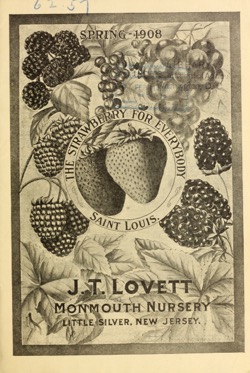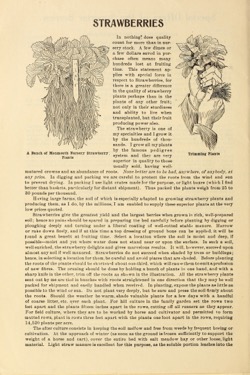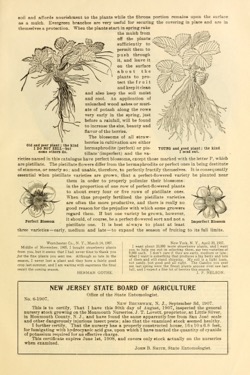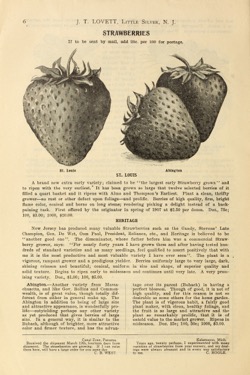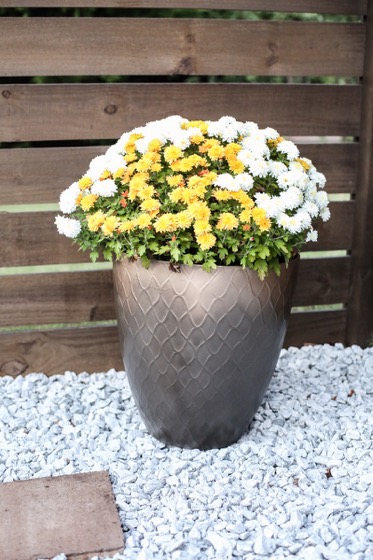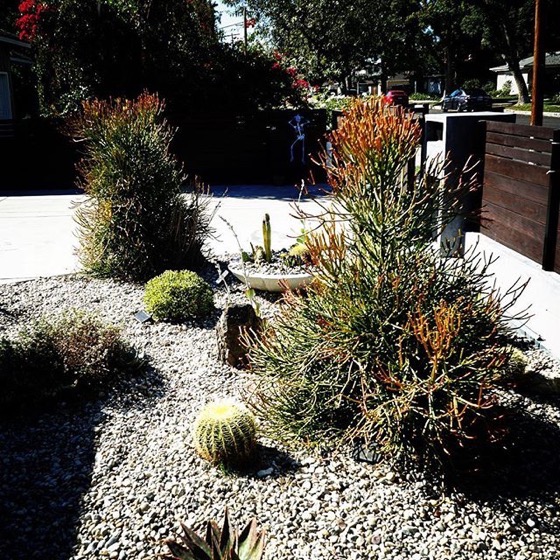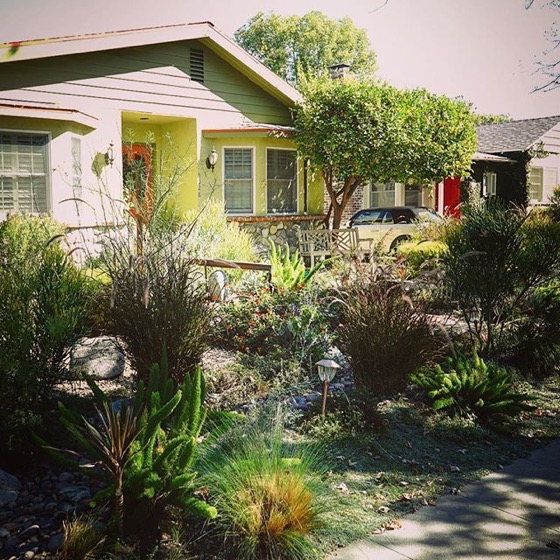Archive.org has a host of old seed catalogs (from mid-19th to mid-20th Century) available in many formats and on a host of topics. I happened across a few in my Pinterest feed and gone completely down the rabbit hole in this treasure trove of information. Sure some ideas might be out of date, but you never know what you might find when you explore these catalogs. I’ll be sharing more catalogs as I find them in the coming weeks. –Douglas
Download in Text, PDF, Single Page JPG, TORRENT from Archive.org
STRAWBERRIES
A Banch of Monmotitli Nursery Strawberry” Plants
In nothing’ does quality- count for more than in nur- sery stock. A few dimes or a few dollars saved in pur- chase often means many hundreds lost at fruiting time. This statement ap- plies with sppcial force in respect to Strawberries, for there is a greater difference in the quality of strawberry plants perhaps than in the plants of any other fruit; not only in their sturdiness and ability to live when transplanted, but their fruit producing power also.
The strawberry is one of my specialties and I grow it by the hundreds of thou- sands. I grow all my plants by the famous pedigree system and they are very superior in quality to those usually sold, having well- matured crowns and an abundance of roots. None better are to be had, anywhere, of anybody, at any price. In digging and packing we are careful to protect the roots from the wind and sun to prevent drying. In packing I use liuht crates made for the purpose, or light boxes (which I find better than baskets, particularly for distant shipment). Thus packed the plants weigh from 25 to 30 pounds per thousand.
Having large farms, the soil of which is especially adapted to growing strawberry plants and producing them, as I do, by the millions, I am enabled to supply these superior plants at the very low prices quoted.
Strawberries give the greatest yield and the largest berries when grown in rich, well-prepared soil; hence no pains should be spared in preparing the bed carefully before planting by digging or ploughing deeply and turning under a liberal coating of well-rotted stabl^^ manure. Harrow or rake down finely, and if at this time a top dressing of ground bone can be applied, it will be found a great benefit at fruiting time. Select a location where the soil is moist and deep, if possible— moist and yet where water does not stand near or upon the surface. In such a soil, well enriched, the strawberry delights and gives marvelous results. It will, however, succeed upon almost any soil if well manured. Strawberries do not succeed when shaded by trtes or buildings; hence, in selecting a location for them, be careful and avoid places that are hhnded. Before planting the roots of the plants should be ^^liortea^d about ooe-third, which willcau-»ethera toemitaprofnsion of new fibres. The pruning should be done by holding a bunch of plants in one hand, and with a sharp knife in the other, trim off the roots as shown in the illustration. All the strawberry plants sent out by me are tied in bunche?* with roots straightened in one direction that thty may be well packed for shipment and easily handled when received. In planting, expose the plants as little as possible to the wind or sun. Do not plant very deeply, but be sure and press the soil firmly about the roots. Should the weather be warm, shade valuable plants for a few days with a handful of coarse litter, etc. over each plant. For hill culture in the family garden set the rows two feet apart and the plants fifteen inches apart in the rows, cutting off all runners as they appear. For field culture, where they are to be worked by horse and cultivator and permitted to form matted rows, plant in rows three feet apart with the plants one foot apart in the rows, requiring 14,520 plants per acre.
The after culture consists in keeping the soil mellow and free from weeds by frequent hoeing or cultivation. At the approach of winter (as soon as the ground is frozen suflBciently to support the weight of a horse and cart), cover the entire bed with salt meadow hay or other loose, light material. Light straw manure is excellent for this purpose, as the soluble portion leaches into the soil and affords nourishment to the plants while the fibrous portion remains upon the surface as a mulch. Ev^ergreen branches are very useful for securing the covering in place and are in themselves a protection. When the plants start in spring rake
the mulch from off the plants sufficiently to permit them to push through it, and leave it on the surface about the plants to pro- tect the fruit and keep it clean and also keep the soil moist and cool. An application of unleached wood ashes or muri- ate of potash along the rows very early in the spring, just before a rainfall, will be found to increase the size, beauty and flavor of the berries.
The blossoms of all straw- berries in cultivation are either hermaphrodite (perfect) or pis- tillate ” (imperfect) and the va- rieties named in this catalogue have perfect blossoms, except those marked with the letter P, which are pistillate. The pistillate flowers differ from the hermaphrodite or perfect ones in being destitute of stamens, or nearly so : and unable, therefore, to perfectly fructify themselves. It is consequently essential when pistillate varieties are grown, that a perfect-flowered variety be planted near ^ ^ them in order to properly pollenize their blossoms:
